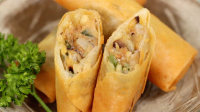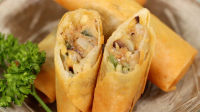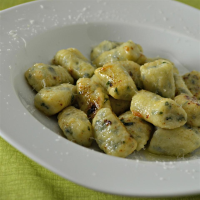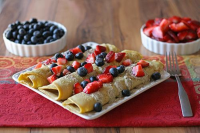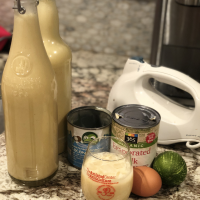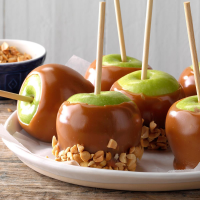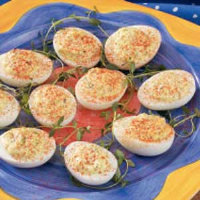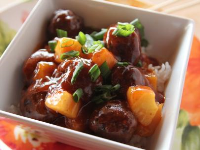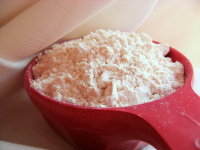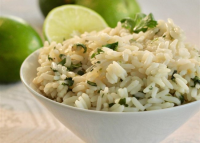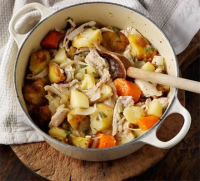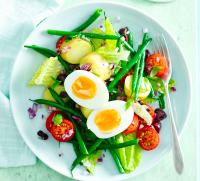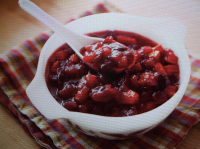HARUMAKI RECIPE (DEEP-FRIED SPRING ROLLS WITH PORK AND ...
Steps:
- Let's prepare the ingredients. Cut out the thick center part of the Napa cabbage leaf.
- Cut it into thin slices across the grains, and then cut the long slices into smaller pieces.
- Cut the leafy part into 1cm (0.4") pieces. Then, cut the large slices into smaller pieces.
- This is a boiled bamboo shoot, about a 3 cm (1.2") piece. Cut off the center part.
- Press the curved outer part against the cutting board with the cut side facing down and thinly slice it horizontally.
- Then, cut the slices into strips along the grains.
- The center part consists of multiple partitions. Detach the partition one at a time. Stack them on top of each other and roughly chop into smaller pieces.
- Rehydrate the dried shiitake mushroom and cut into 3 cm (1.2") strips as thin as possible.
- Cut the garlic chives into 2 cm (0.8") pieces.
- Let's prepare the seasonings. Combine the chicken stock, oyster sauce, soy sauce, sugar, and sake. Mix well to dissolve the sugar.
- To the ground pork, add a pinch of salt, pepper, potato starch, and sake.
- Distribute the seasonings in the meat with your hand. Adding the potato starch will help to prevent the meat from becoming tough.
- Next, let's make the filling. Put a moderate amount of vegetable oil in a heated pan. Add the seasoned ground pork and begin cooking while separating the meat.
- Since the potato starch is added to the meat, it won't break into fine pieces. As long as there are no large lumps left, it should be fine.
- When the redness of the meat almost turns brown, add the chopped ginger root.
- Stir-fry until it gives off a fragrant aroma.
- When it begins to smell good, add the bamboo shoot and rehydrated shiitake mushroom.
- Stir-fry and reduce the moisture.
- Add the napa cabbage and continue to stir-fry. Cook them slowly, letting the water evaporate as well.
- Spread out and press the mixture down into the pan, and saute it thoroughly to reduce the moisture.
- Now, stir the combined seasonings thoroughly and add it to the pan.
- Cover and bring to a boil, then simmer for 3 to 4 minutes.
- Lightly stir and make a space in the center. Add the garlic chives to the space and give a quick stir.
- Reduce the heat to low, stir the diluted potato starch thoroughly, and pour over the vegetables. Quickly mix and distribute it.
- Avoid adding the starch to the section without any vegetables since it will only firm up in that area. Also, instead of adding the starch all at once, add it a little at a time while checking the thickness.
- Turn up the heat. Add the statch until it becomes thick as shown, and mix well.
- Finally, add a drizzle of sesame oil and it is ready.
- Transfer the mixture to a tray floating on ice water.
- And spread it out thinly so that it will cool quickly.
- Cover the tray with plastic wrap and place ice packs on top to chill even more quickly.
- Now, wrap the fillings for one person. Harumaki wrappers have a smooth side and a rough side.
- Place the wrappers on a flat surface with the smooth side facing down and one corner facing you. If the smooth side is on the outside, you will get a clean, presentable surface when fried.
- Place the filling horizontally near the corner.
- Hold the corner and roll it up to cover the filling.
- Roll it up one more time.
- Fold one side to the center while pushing the air out of it.
- Fold the other side to the center as well.
- Then, roll it loosely, creating a small gap. If you wrap the filling while placing your little finger inside, it should be just right.
- Roll it loosely one more time.
- Finally, coat the corner with the thick diluted flour and close it firmly.
- The key to rolling Harumaki is to roll tightly at the beginning and then roll loosely toward the end. If there is a lot of air inside at the beginning of the roll, it will expand and the wrapper will tear easily.
- By rolling it loosely at the end, the frying oil will get into the gaps and the water in the wrappers will be removed, making the outside extra crispy.
- Adjust the shape while leaving the gaps inside and place it onto a tray with the closed side facing down.
- And now, heat the frying oil to a relatively low temperature, about 160 °C (320 °F). You can easily find the right temperature by adding a small piece of Harumaki wrapper.
- Avoid stacking the uncooked Harumaki on top of each other or leave them for a while otherwise the wrappers will tear easily.
- Adjust the shape and gently place the Harumaki in the oil.
- Rotate them around in the pan to brown the surface evenly.
- Occasionally flip the Harumaki over.
- To deep-fry the surface nicely, the amount of oil should be deep enough to almost cover the Harumaki.
- Deep-fry for about 4 minutes, then increase the temperature when they are almost fully browned. The oil that has been absorbed in the wrappers will come out, and you'll get a crispy texture.
- When the outside is deliciously browned, remove from the oil.
- You can drain the excess oil well by placing them upright in a mesh strainer lined with a paper towel. The browning color is just perfect!
- Let's arrange the Harumaki in a bowl. Place two pieces crosswise and garnish with the parsley leaves.
- Cut one piece in half diagonally. Pierce the surface with the tip or point of the knife blade and start cutting from the crack.
- This will help to keep the cut edge from falling apart.
- Arrange it so that you can see the cut end and it is ready.
- Enjoy the Harumaki with karashi mustard, vinegar, or vinegar soy sauce to your liking.
HARUMAKI RECIPE (DEEP-FRIED SPRING ROLLS WITH PORK AND ...
Steps:
- Let's prepare the ingredients. Cut out the thick center part of the Napa cabbage leaf.
- Cut it into thin slices across the grains, and then cut the long slices into smaller pieces.
- Cut the leafy part into 1cm (0.4") pieces. Then, cut the large slices into smaller pieces.
- This is a boiled bamboo shoot, about a 3 cm (1.2") piece. Cut off the center part.
- Press the curved outer part against the cutting board with the cut side facing down and thinly slice it horizontally.
- Then, cut the slices into strips along the grains.
- The center part consists of multiple partitions. Detach the partition one at a time. Stack them on top of each other and roughly chop into smaller pieces.
- Rehydrate the dried shiitake mushroom and cut into 3 cm (1.2") strips as thin as possible.
- Cut the garlic chives into 2 cm (0.8") pieces.
- Let's prepare the seasonings. Combine the chicken stock, oyster sauce, soy sauce, sugar, and sake. Mix well to dissolve the sugar.
- To the ground pork, add a pinch of salt, pepper, potato starch, and sake.
- Distribute the seasonings in the meat with your hand. Adding the potato starch will help to prevent the meat from becoming tough.
- Next, let's make the filling. Put a moderate amount of vegetable oil in a heated pan. Add the seasoned ground pork and begin cooking while separating the meat.
- Since the potato starch is added to the meat, it won't break into fine pieces. As long as there are no large lumps left, it should be fine.
- When the redness of the meat almost turns brown, add the chopped ginger root.
- Stir-fry until it gives off a fragrant aroma.
- When it begins to smell good, add the bamboo shoot and rehydrated shiitake mushroom.
- Stir-fry and reduce the moisture.
- Add the napa cabbage and continue to stir-fry. Cook them slowly, letting the water evaporate as well.
- Spread out and press the mixture down into the pan, and saute it thoroughly to reduce the moisture.
- Now, stir the combined seasonings thoroughly and add it to the pan.
- Cover and bring to a boil, then simmer for 3 to 4 minutes.
- Lightly stir and make a space in the center. Add the garlic chives to the space and give a quick stir.
- Reduce the heat to low, stir the diluted potato starch thoroughly, and pour over the vegetables. Quickly mix and distribute it.
- Avoid adding the starch to the section without any vegetables since it will only firm up in that area. Also, instead of adding the starch all at once, add it a little at a time while checking the thickness.
- Turn up the heat. Add the statch until it becomes thick as shown, and mix well.
- Finally, add a drizzle of sesame oil and it is ready.
- Transfer the mixture to a tray floating on ice water.
- And spread it out thinly so that it will cool quickly.
- Cover the tray with plastic wrap and place ice packs on top to chill even more quickly.
- Now, wrap the fillings for one person. Harumaki wrappers have a smooth side and a rough side.
- Place the wrappers on a flat surface with the smooth side facing down and one corner facing you. If the smooth side is on the outside, you will get a clean, presentable surface when fried.
- Place the filling horizontally near the corner.
- Hold the corner and roll it up to cover the filling.
- Roll it up one more time.
- Fold one side to the center while pushing the air out of it.
- Fold the other side to the center as well.
- Then, roll it loosely, creating a small gap. If you wrap the filling while placing your little finger inside, it should be just right.
- Roll it loosely one more time.
- Finally, coat the corner with the thick diluted flour and close it firmly.
- The key to rolling Harumaki is to roll tightly at the beginning and then roll loosely toward the end. If there is a lot of air inside at the beginning of the roll, it will expand and the wrapper will tear easily.
- By rolling it loosely at the end, the frying oil will get into the gaps and the water in the wrappers will be removed, making the outside extra crispy.
- Adjust the shape while leaving the gaps inside and place it onto a tray with the closed side facing down.
- And now, heat the frying oil to a relatively low temperature, about 160 °C (320 °F). You can easily find the right temperature by adding a small piece of Harumaki wrapper.
- Avoid stacking the uncooked Harumaki on top of each other or leave them for a while otherwise the wrappers will tear easily.
- Adjust the shape and gently place the Harumaki in the oil.
- Rotate them around in the pan to brown the surface evenly.
- Occasionally flip the Harumaki over.
- To deep-fry the surface nicely, the amount of oil should be deep enough to almost cover the Harumaki.
- Deep-fry for about 4 minutes, then increase the temperature when they are almost fully browned. The oil that has been absorbed in the wrappers will come out, and you'll get a crispy texture.
- When the outside is deliciously browned, remove from the oil.
- You can drain the excess oil well by placing them upright in a mesh strainer lined with a paper towel. The browning color is just perfect!
- Let's arrange the Harumaki in a bowl. Place two pieces crosswise and garnish with the parsley leaves.
- Cut one piece in half diagonally. Pierce the surface with the tip or point of the knife blade and start cutting from the crack.
- This will help to keep the cut edge from falling apart.
- Arrange it so that you can see the cut end and it is ready.
- Enjoy the Harumaki with karashi mustard, vinegar, or vinegar soy sauce to your liking.
HARUMAKI ??? • JUST ONE COOKBOOK
May 04, 2014 · Harumaki Ingredients. Typical ingredients for Harumaki (Japanese spring rolls) include some type of meat (pork, shrimp, etc), carrot, shiitake mushrooms, bamboo shoot, etc. Each family makes them slightly different, and today I’ll show how I make my tasty Harumaki. I learned my recipe from my mom using 10 ingredients for the filling.
From justonecookbook.com
From justonecookbook.com
See details
HARUMAKI SPRING ROLLS RECIPE - JAPAN CENTRE
How To Prepare Take the shiitake mushrooms and place them in water to soak soften them. While you are waiting for those, slice up your... Next, mix the meat or prawns with some grated ginger and a pinch of salt. Add the soy sauce, cooking sake, and a pinch... To make the spring rolls, separate the ...
From japancentre.com
From japancentre.com
See details
HARUMAKI (EGG ROLL) RECIPE – JAPANESE COOKING 101
From japanesecooking101.com
See details
VEGETABLE HARUMAKI (FRIED SPRING ROLL) RECIPE
Jan 24, 2015 · Ingredients 6 small to medium dried shiitake mushrooms 1 1/2 cups water, divided 2 1/2 ounces dried glass noodles, also called mung bean threads, potato noodles, or cellophane noodles 1 medium yellow onion 2 green onions 6 to 7 napa cabbage leaves 1 tablespoon olive oil 1 cup trimmed carrots, cut ...
From thespruceeats.com
From thespruceeats.com
See details
HARUMAKI (JAPANESE SPRING ROLL) - SUDACHI RECIPES
Sep 17, 2021 · Fold the edges. Fold the right and left sides at a 90 degree angle. Roll up. Roll the filling up, but make sure to leave space at the top. Wet the edges. In order to seal the harumaki, use a paste (2 tbsp water mixed with 1 tbsp plain flour) and spread it along the top edges. Seal the harumaki.
From sudachirecipes.com
From sudachirecipes.com
See details
HARUMAKI (JAPANESE SPRING ROLL RECIPE) - IZZYCOOKING
Feb 19, 2021 · Harumaki is Japanese spring rolls that are crispy on the outside and soft, flavorful on the inside. You’ll be surprised how easy it is to make these Harumaki rolls. Fill the wrappers with your choice of vegetables, pork, chicken, or shrimp, and deep-fry until golden brown. I like to serve them with sweet and sour sauce for dipping, perfect for a light lunch, dinner, or appetizer!
From izzycooking.com
From izzycooking.com
See details
BEEF HARUMAKI RECIPE | EPICURIOUS
Dec 09, 2011 · To make the filling, heat a large sauté pan over high heat. Add 2 tablespoons of the oil. Once the oil is hot but not smoking, carefully add the marinated beef and stir, using a wooden spoon or ...
From epicurious.com
From epicurious.com
See details
SPRING ROLLS (HARUMAKI), JAPANESE STYLE | JUSTHUNGRY
Oct 20, 2011 · Recipe: Harumaki (Japanese spring rolls) All the vegetables should be cut so they are about 7 cm / 3 inches long. For 10 to 12 rolls (or however many wrappers come in your packet): For the filling: 4 medium dried shiitake mushrooms, soaked until soft, stems removed and thinly sliced (reserve soaking liquid) 1/2 medium carrot, finely shredded.
From justhungry.com
From justhungry.com
See details
CHICKEN AND CHEESE HARUMAKI (EGG ROLL) RECIPE – JAPANESE ...
Jan 17, 2021 · Harumaki egg roll is a deep-fried packet filled with shredded meat and vegetables, and one of the most popular Chinese foods in Japanese cuisine. In this recipe, instead of shredded meat and vegetables, we stuffed cooked chicken breast, cheese, and fragrant Shiso leaves.
From japanesecooking101.com
From japanesecooking101.com
See details
RECIPE | HARUMAKI ROLL | FOUR MAGAZINE
Mar 12, 2015 · 12g ice cream stabilizer. 200g black sesame seeds. Blend the milk and toasted black sesame seeds in the blender. Then cook the sesame milk, milk, and half the sugar.At 40C add the second half of the sugar, dextrose, milk powder and ice cream stabilizer.Cool to 37Cand chill over ice bath.Batch freeze in ice cream machine or freeze in paco jet ...
From four-magazine.com
From four-magazine.com
See details
EASY BAKED JAPANESE SPRING ROLLS (HARUMAKI) - MRS JONES'S ...
Jul 18, 2020 · Harumaki are Japanese spring rolls. The filling is more wet than Chinese spring rolls and thickened with potato starch or corn flour and, unlike Chinese spring rolls, they don’t contain garlic. Harumaki were one of the first Japanese foods I tried when we moved to Japan.
From mrsjoneskitchen.com
From mrsjoneskitchen.com
See details
HARUMAKI (SPRING ROLL) WRAPPERS • JUST ONE COOKBOOK
Nov 08, 2018 · Harumaki Wrappers, or Spring Roll Wrappers, contain no eggs unlike egg roll wrappers. They contain just wheat flour and water. Spring rolls are crispier and have a smoother, lighter-textured surface. If you can’t find a Japanese Harumaki Wrappers, you can find this Spring Home brand. The wrappers are thin just like Japanese ones.
From justonecookbook.com
From justonecookbook.com
See details
RECIPES | DINING WITH THE CHEF | NHK WORLD - ENGLISH
vegetables chicken. Stir-fried Sugar Snap Peas with Chicken Livers. seafood rice_noodles. Yakisoba with Salt & Nam Pla (Stir-fried Noodles) vegetables soups_stews. Spinach & Fried Tofu Miso Soup ...
From nhk.or.jp
From nhk.or.jp
See details
NATIONAL RECIPES: VEGETABLE HARUMAKI: JAPANESE SPRING ...
Feb 09, 2021 · Answer: Harumaki is a crispy Japanese Spring Roll wrapped with a delicious filling of pork, chicken, shrimp, shiitake mushroom, carrots, and vermicelli. They make excellent finger food or appetizer. Spring Rolls (or often called Egg Rolls and used interchangeably) is a dish found in East Asian and Southeast Asian cuisine.
From houstonfoodtruckfest.com
From houstonfoodtruckfest.com
See details
CRAB HARUMAKI RECIPE | EAT YOUR BOOKS
Always check the publication for a full list of ingredients. An Eat Your Books index lists the main ingredients and does not include 'store-cupboard ingredients' (salt, pepper, oil, flour, etc.) - unless called for in significant quantity.
From eatyourbooks.com
From eatyourbooks.com
See details
HARUMAKI / JAPANESE SPRING ROLLS - KITSUNE GOLDEN
Apr 26, 2021 · Harumaki is a Japanese Name of Spring Rolls. Spring rolls started in China as a pancake filled with the new season’s spring vegetables. The name is related to their being consumed during the spring festival in China. We call this roll harumaki (haru means spring, maki means roll) in Japan. This Chinese-originated spring roll has become one of ...
From kitsunegolden.com
From kitsunegolden.com
See details
HOW TO MAKE NAMA HARUMAKI ???? - YOUTUBE
Nama Harumaki is basically from Vietnam. Ingredients I used (6 spring fresh roll): 6 shrimp: 1/2 avocado: lettuce: radish sprout: kanikama: pineappleToday's ...
From m.youtube.com
From m.youtube.com
See details




